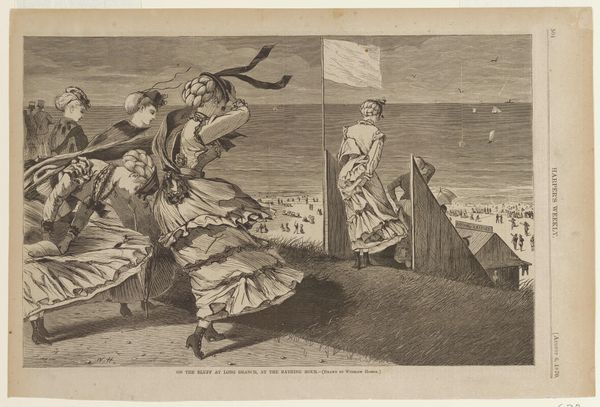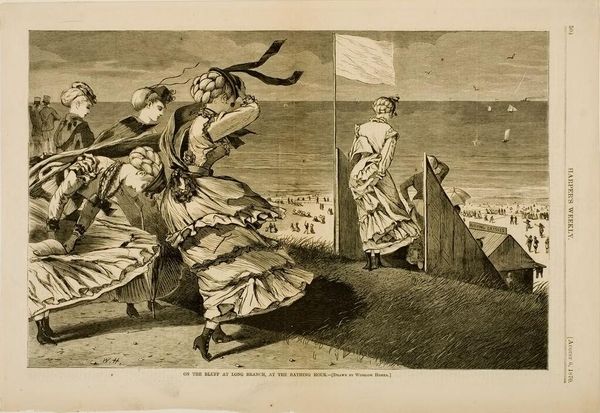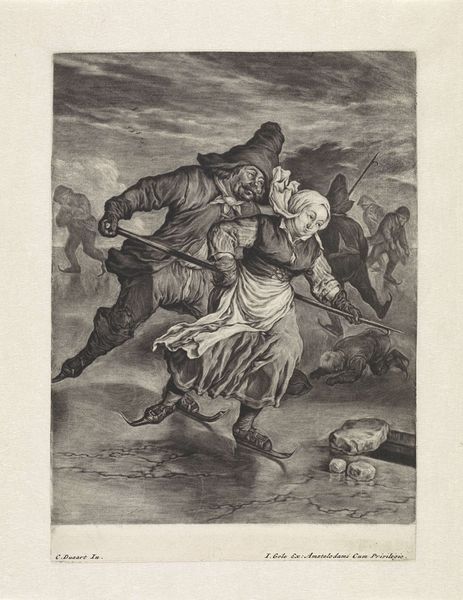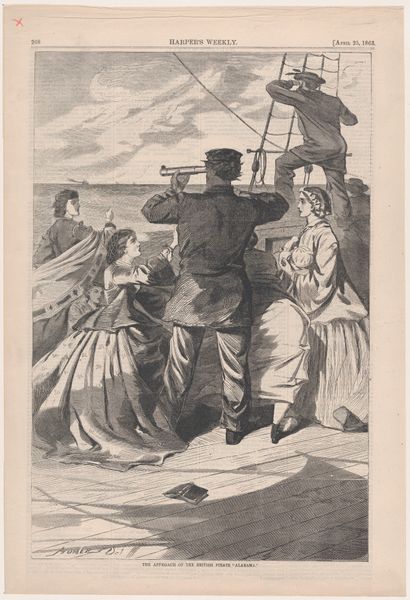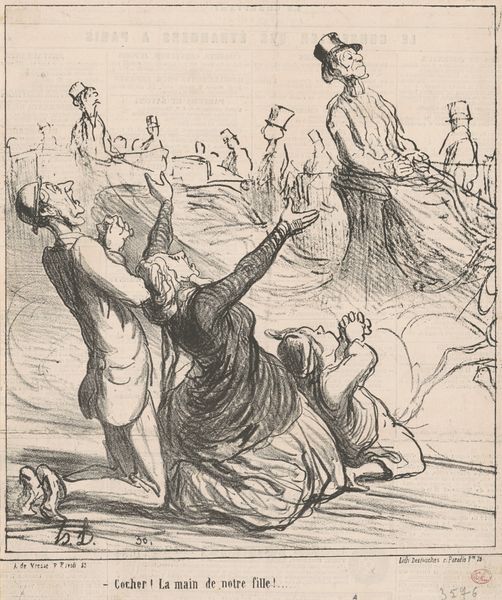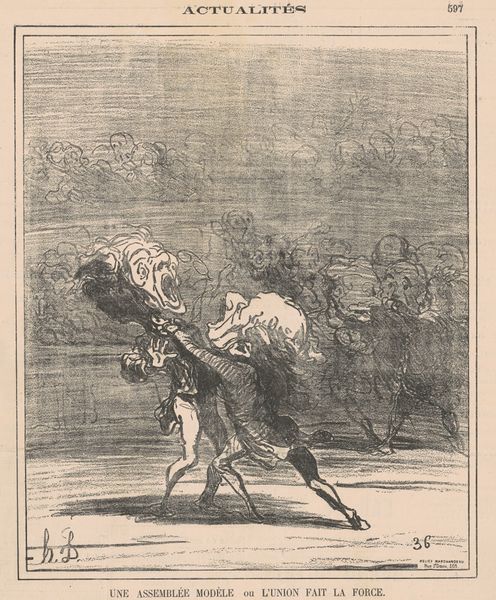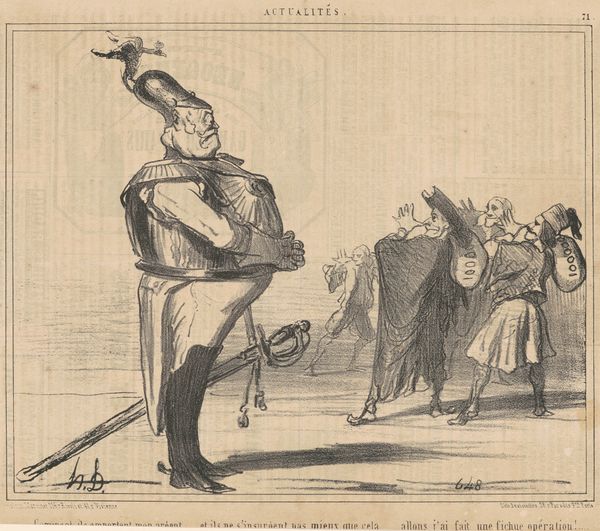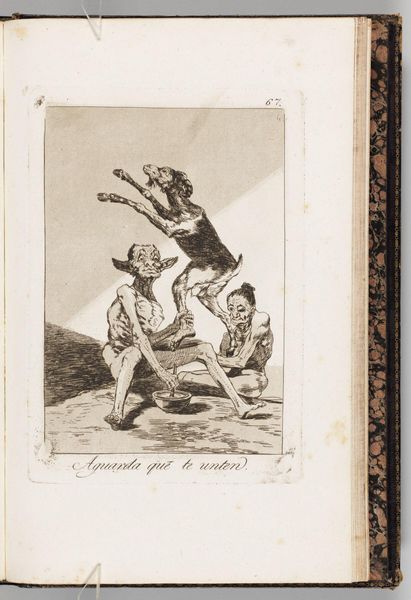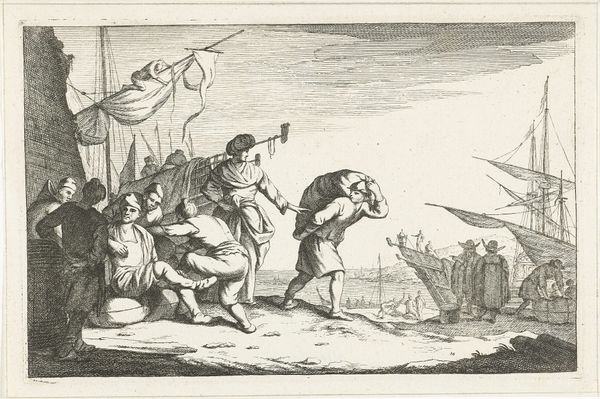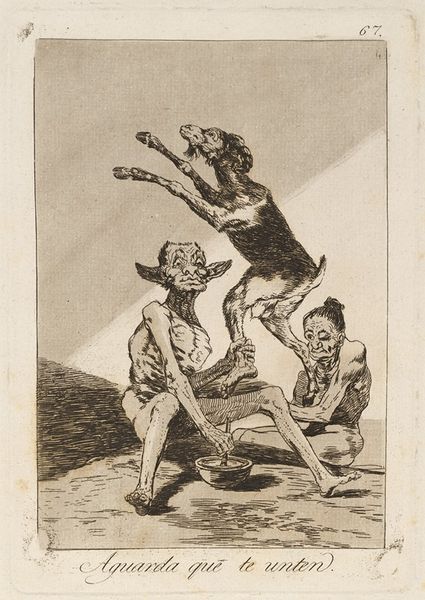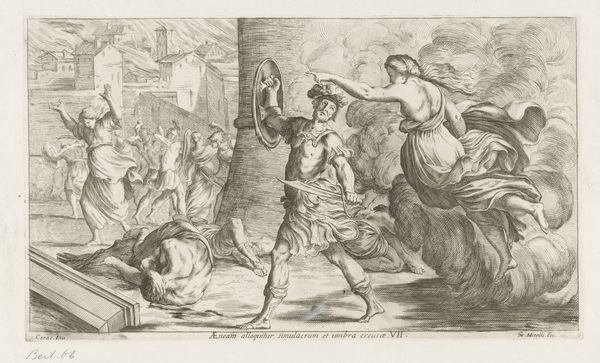
On the Bluff at Long Branch, at the Bathing Hour (from "Harper's Weekly," Vol. XIV) 1870
0:00
0:00
drawing, print, etching
#
drawing
# print
#
impressionism
#
etching
#
landscape
#
genre-painting
Dimensions: image: 8 7/8 x 13 5/8 in. (22.5 x 34.6 cm) sheet: 10 1/2 x 15 3/4 in. (26.6 x 40 cm)
Copyright: Public Domain
Editor: Here we have Winslow Homer’s 1870 etching, "On the Bluff at Long Branch, at the Bathing Hour." It gives us a peek into leisure time at the beach, but something about the scene feels a little… windswept and almost frantic, despite the calm ocean view. What catches your eye in this print? Curator: I'm drawn to how Homer, in a seemingly simple genre scene, is actually reflecting on anxieties around class and social performance in post-Civil War America. These beach scenes, mass-produced in publications like Harper's Weekly, served as visual instruction manuals, teaching the burgeoning middle class how to behave in newly democratized public spaces like Long Branch. Notice how the women's clothing, though impractical for the beach, signals their social standing. Editor: So, the beach isn't just a place for fun; it’s a stage for social climbing? Curator: Exactly. And Homer subtly critiques this. Look at how the figures on the bluff are separated from the general beachgoers by that wooden barrier, physically representing a social divide. The flag acts as a signal, marking this exclusive territory, controlling access to the public arena of leisure. Editor: That's fascinating! I hadn't considered how the physical space reinforces social hierarchy. What about the fact that it's published in *Harper's Weekly*? Curator: That’s crucial. It becomes a visual document, not just of the event, but of its intended audience and social role. The relatively affordable paper gave access to this vision of middle class to a great deal more of the country than the real beach did. Editor: So it's both capturing and constructing an idea of leisure. It sounds like even something as simple as a day at the beach carries a lot of weight. Curator: Absolutely. Art like this provides an intriguing snapshot of how societal norms and class tensions were playing out in everyday life, carefully constructing how the American identity was changing during Reconstruction. Editor: This has totally changed how I see this image, and these scenes. Thanks for helping me look at the wider context!
Comments
No comments
Be the first to comment and join the conversation on the ultimate creative platform.
